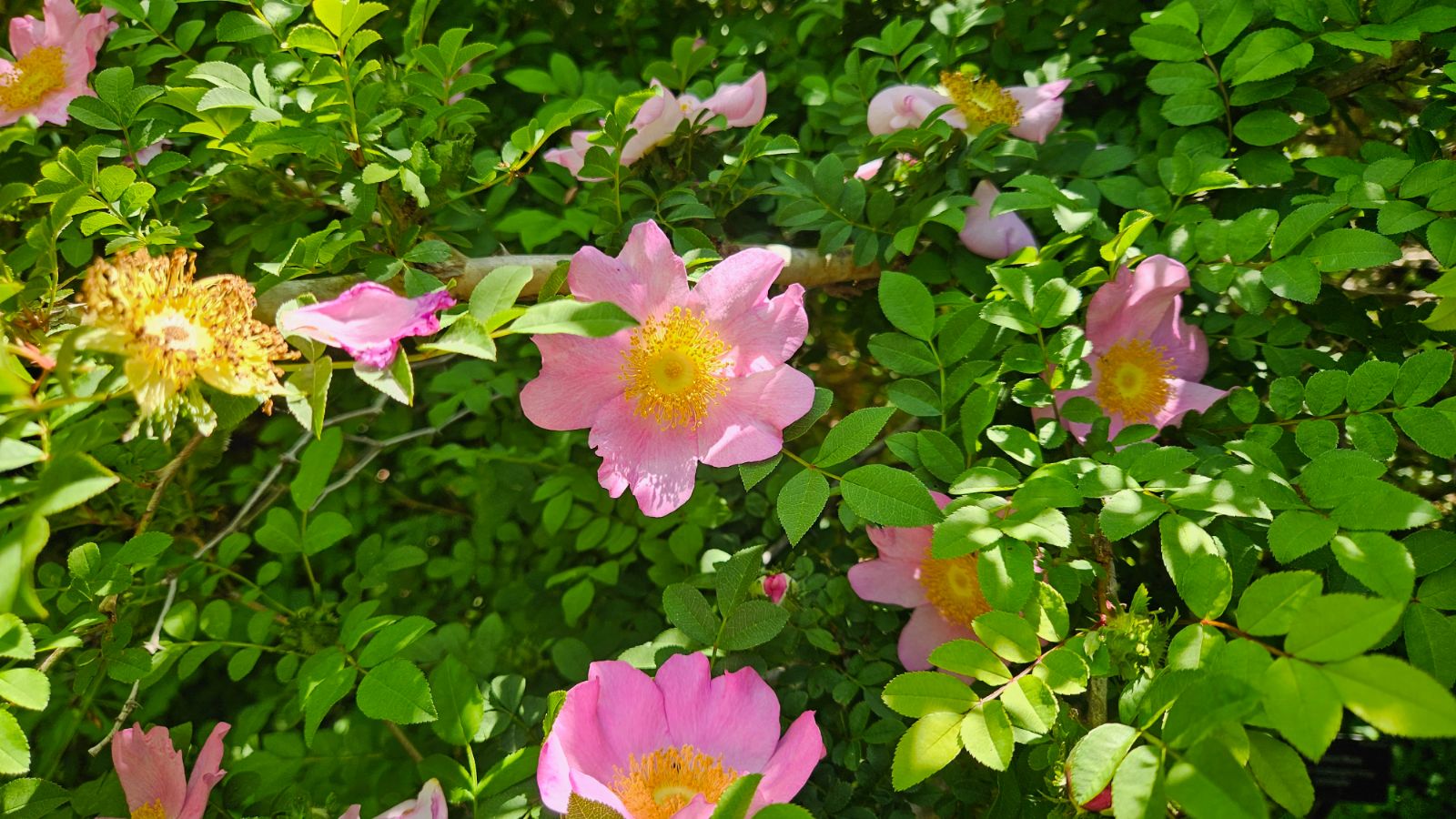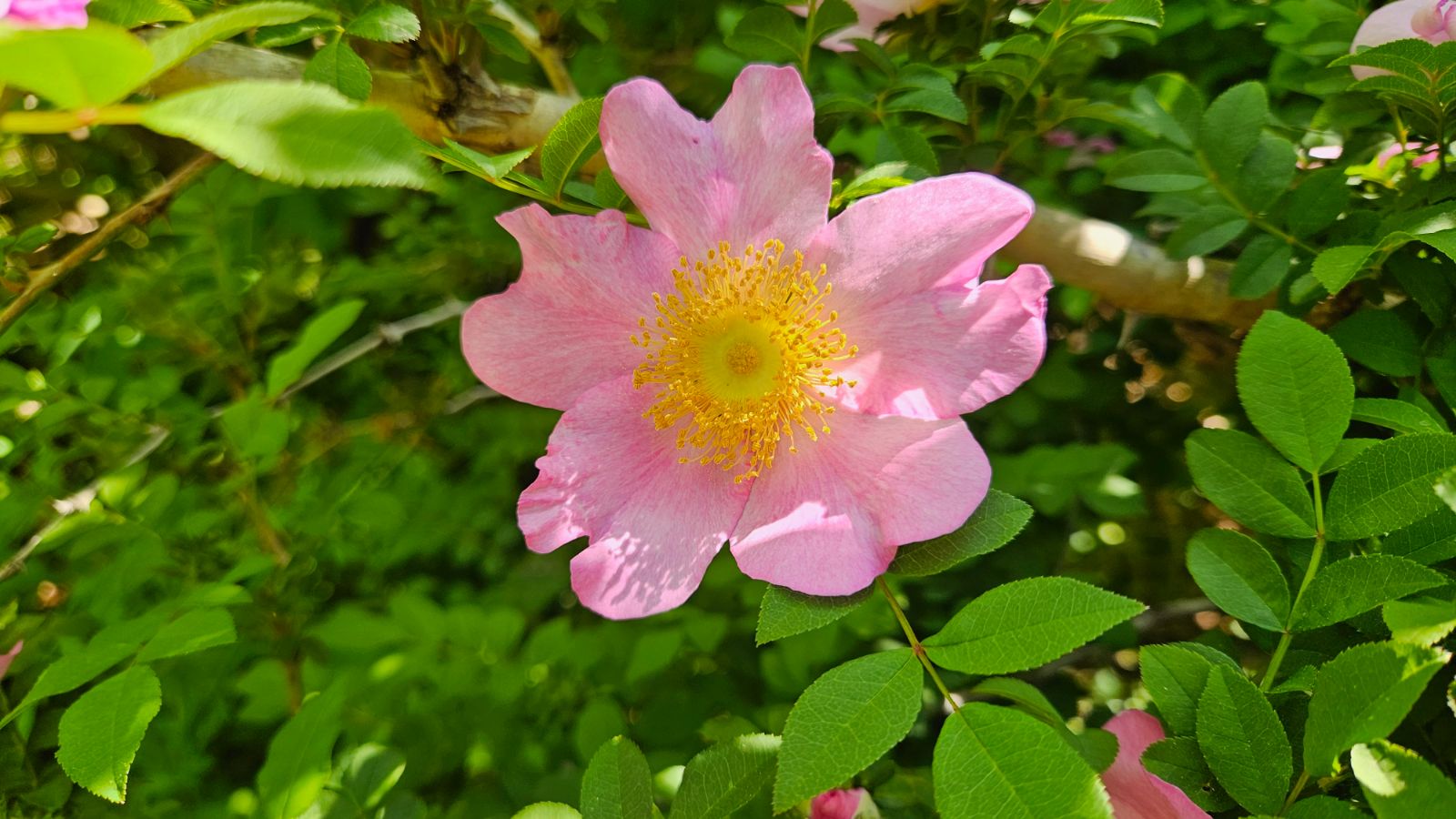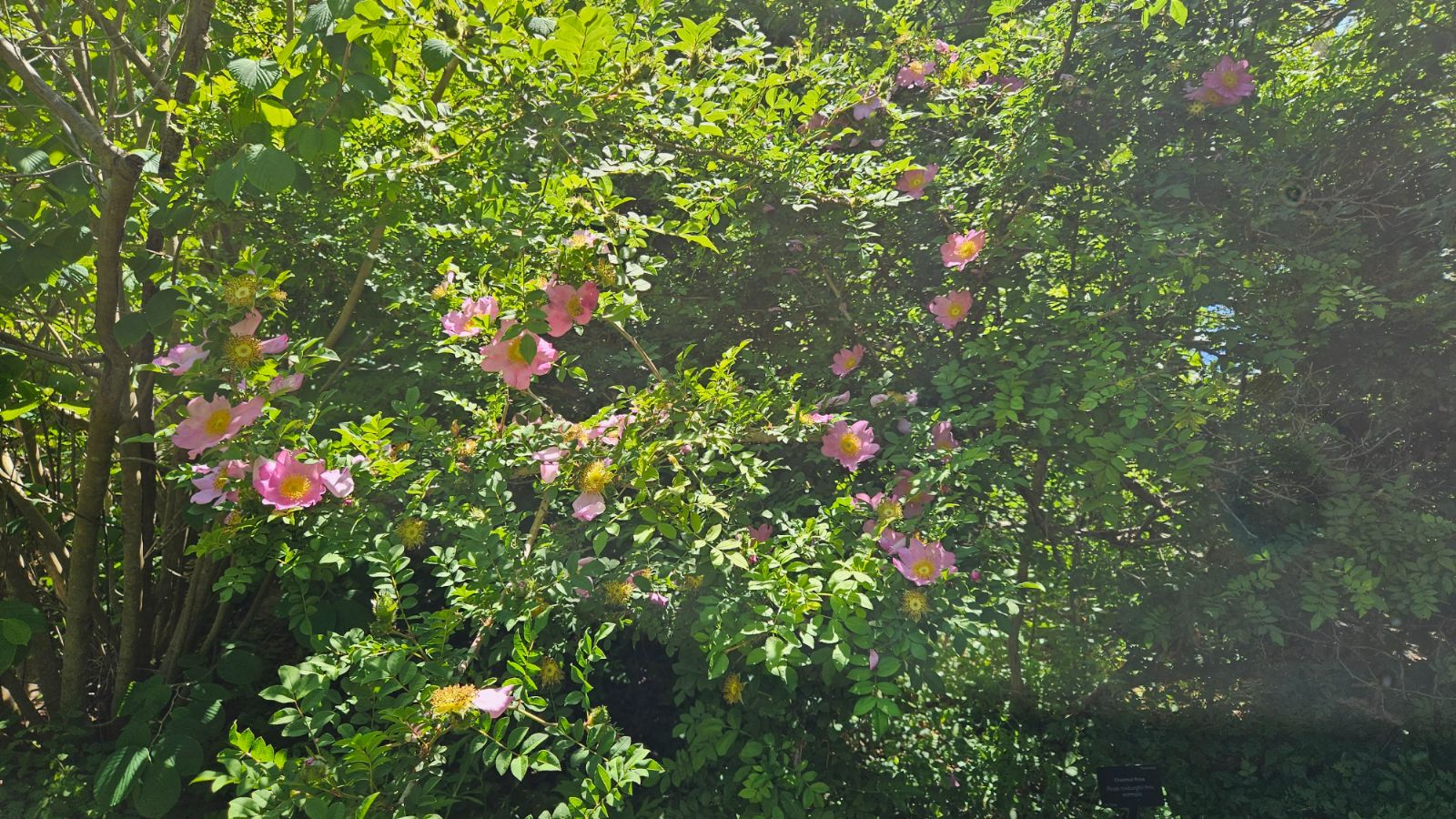Rosa roxburghii
Credits
Article from Bean's Trees and Shrubs Hardy in the British Isles
Recommended citation
'Rosa roxburghii' from the website Trees and Shrubs Online (treesandshrubsonline.
Genus
Common Names
- Burr Rose
Synonyms
- R. microphylla Roxb. ex Lindl. (1820), not Desf. (1798)
- R. forrestii Focke
- R. roxburghii var. hirtula (Reg.) Rehd. & Wils.
- R. microphylla var. hirtula Reg.
- R. hirtula (Reg.) Nakai
Infraspecifics
Other taxa in genus
- Rosa acicularis
- Rosa × alba
- Rosa albertii
- Rosa anemoniflora
- Rosa arkansana
- Rosa arvensis
- Rosa banksiae
- Rosa beggeriana
- Rosa biebersteinii
- Rosa blanda
- Rosa bracteata
- Rosa brunonii
- Rosa californica
- Rosa canina
- Rosa carolina
- Rosa centifolia
- Rosa cerasocarpa
- Rosa chinensis
- Rosa corymbulosa
- Rosa damascena
- Rosa davidii
- Rosa 'Dupontii'
- Rosa ecae
- Rosa eglanteria
- Rosa elegantula
- Rosa elymaitica
- Rosa fedtschenkoana
- Rosa filipes
- Rosa foetida
- Rosa foliolosa
- Rosa × fortuniana
- Rosa × francofurtana
- Rosa gallica
- Rosa gigantea
- Rosa glauca
- Rosa glutinosa
- Rosa gymnocarpa
- Rosa × harisonii
- Rosa helenae
- Rosa hemisphaerica
- Rosa × hibernica
- Rosa hugonis
- Rosa × involuta
- Rosa jundzillii
- Rosa laevigata
- Rosa longicuspis
- Rosa 'Macrantha'
- Rosa macrophylla
- Rosa majalis
- Rosa maximowicziana
- Rosa moyesii
- Rosa mulliganii
- Rosa multibracteata
- Rosa multiflora
- Rosa nitida
- Rosa nutkana
- Rosa palustris
- Rosa pendulina
- Rosa persica
- Rosa pimpinellifolia
- Rosa pisocarpa
- Rosa × polliniana
- Rosa prattii
- Rosa pulverulenta
- Rosa × reclinata
- Rosa × reversa
- Rosa × richardii
- Rosa rubiginosa
- Rosa rubus
- Rosa rugosa
- Rosa sempervirens
- Rosa sericea
- Rosa setigera
- Rosa setipoda
- Rosa sicula
- Rosa soulieana
- Rosa stellata
- Rosa tomentosa
- Rosa villosa
- Rosa virginiana
- Rosa 'Watsoniana'
- Rosa webbiana
- Rosa wichuraiana
- Rosa willmottiae
- Rosa xanthina
A sturdy bush that, in its normal single-flowered form, grows up to 10 ft high and as much in width; bark grey or fawn, peeling; branches stiff, armed with a few rigid, straight prickles in pairs. Leaves 2 to 4 in. long, consisting of nine to seventeen or even nineteen leaflets; rachis downy and with a few prickles. Leaflets elliptic, ovate or oblong-ovate, up to 1 in. or slightly more long, obtuse or acute at the apex, rounded to cuneate at the base, glabrous on both sides or downy beneath, simply toothed. Flowers usually solitary, delicate rose, 2 to 21⁄2 in. across, pleasantly fragrant (for the flowers of the type, which are double, see below); pedicels and receptacle prickly. Sepals broadly ovate, lobed, downy. Fruits flattened, tomato-shaped, 11⁄2 in. across, very spiny, yellowish green, fragrant.
Native of China and Japan; the type of the species was a double-flowered garden variety introduced from China to the Calcutta Botanic Garden, where it had long been cultivated (see below). The next introduction was of the Japanese race sometimes distinguished as var. hirtula, to which most single-flowered plants in gardens probably belong (Bot. Mag., t. 6548 (1881)). The wild single-flowered form of China (f. normalis Rehd. & Wils.) was introduced by Wilson, according to whom it is abundant by waysides and in semi-arid river-valleys throughout the warmer parts of W. Szechwan.
R. roxburghii is a most distinct rose, with its peeling bark, its small, numerous leaflets, and especially by its large, spiny, apple-like fruit with no hint of red in it even when fully ripe. In the leafless state its open habit, stiff branches and peeling bark scarcely suggest a rose. The flowers tend to be concealed by the foliage but are deliciously fragrant and much visited by bees.
From the Supplement (Vol. V)
The wild Chinese form of this species (f. normalis) was reintroduced by Roy Lancaster from the Yiba Shan in western Szechwan in 1981 (L.817). It has flowered, and is likely to prove very distinct from the Japanese form long grown in gardens, both in habit and foliage. The plants seen by Wilson in western Szechwan early this century were only 2–4 ft high, with obovate or narrowly ovate leaflets. The Japanese plants grow much taller and their leaflets are mostly elliptic or oblong-elliptic. The main difference, however, is that in the latter the leaflets are downy beneath. Plants of Japanese provenance can be distinguished as var. hirtula (Reg.) Rehd. & Wils.



